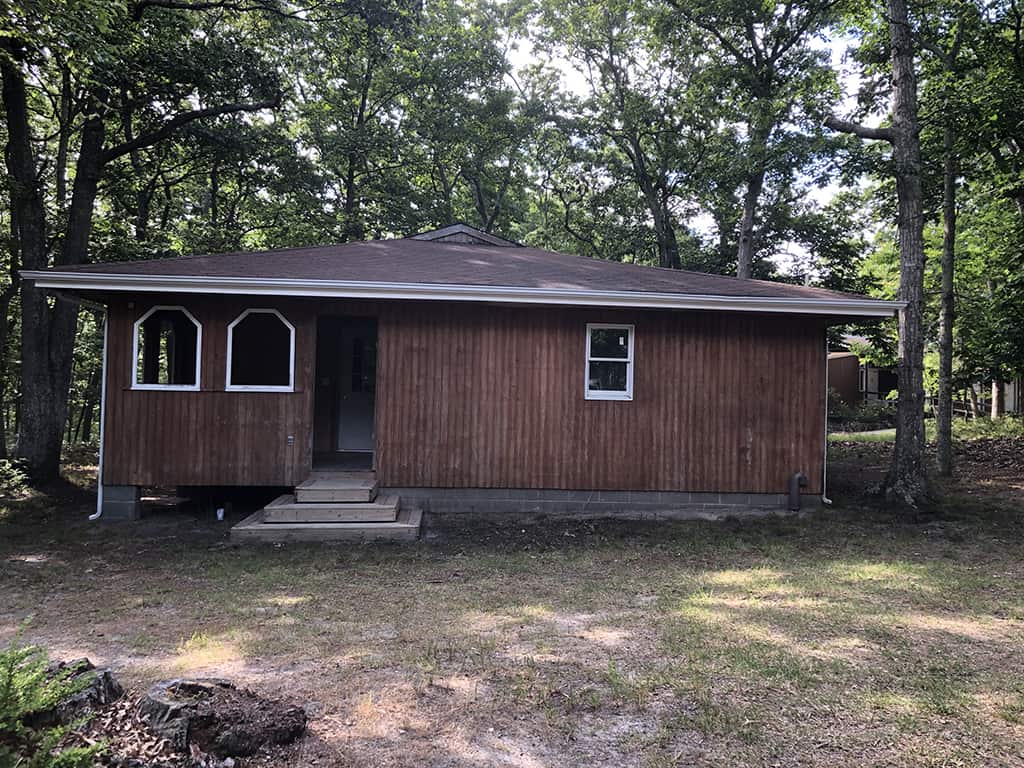Community Preservation Fund Restores Ranger Station at Former Girl Scouts Camp
The natural beauty of the East End landscape is what draws many to the Hamptons. The ocean and bay beaches, acres of farmland, and preserved open space set this corner of the world apart. There’s a strong need to be outdoors, especially as we look toward the famous Hamptons summer season. All of this is worth fighting for, and many that live and work here have. The Community Preservation Fund (CPF), a program that began through the efforts of local elected officials and citizens in the late 1990s, preserves the rural character of the East End. In Southampton alone, nearly 5,000 acres have been saved from development through these preservation efforts. Throughout the course of the COVID-19 pandemic, this preserved land has been a saving grace.
As one of the most desirable places to own a home, there is a growing demand to develop on the East End. The CPF allows Hamptons and North Fork towns to purchase lands that would otherwise be lost to development, such as farmland, open space, wetlands, woodlands, and historic properties. Notable victories include preserved acres of beach and bay front along Dune Road, creating recreational trails like Paumonack Path, and historic restoration projects. When the pandemic hit last year, an opportunity to restore another historic property presented itself.
Lisa Kombrink, who works in the Department of Community Preservation in the Town of Southampton, found the CPF offices in Hampton Bays were too small for social distancing. Having visited the Ranger Station at the former local Girl Scout camp, known as Squiretown Park, she found that the building would be an ideal home base for field employees. Having sat unused for 10 years, it needed some work.
“We spent months in between other projects cleaning up the building and making it comfortable, Kombrink shares. “This included recycling old desks from Town Hall and painting them to suit the atmosphere of the camp, refurbishing existing furniture, and making use of memorabilia and lighting donated by friends.”
The interior of this building maintains the camp feel with its décor. Up next is painting the exterior. There is another structure on the property Kombrink shares is being eyed for renovation as well. Built in 1940, the building that had been the Winter Cabin, known familiarly as the “Dining Hall,” had served as the main lodge in the camp. After decades of use, the Town purchased the property in 2007 with funds from the CPF, and continued to host local Girl and Boy Scout troops for overnight camping trips. The Winter Cabin had been used until that year.
Now, the Town’s Landmarks Board is considering an application to landmark this building. If approved, the CPF will begin the process of renovating this unique space so that it can once again be enjoyed by the community.
As CPF staff began to work at the Squiretown Park site regularly, Kombrink saw a noticeable change in the atmosphere with the park coming back to life. “I have walked the trails through the property, and find something new every time I am there,” Kombrink says. “My absolute favorite part of the park is the view just a short distance from the Ranger Station. The trail winds through the woods and passes along a high bluff overlooking Great Peconic Bay.”















!['The Maples' is a prestigious generational compound of two extraordinary estates: 18 Maple and 22 Maple. This rare offering, designed by luxury architect Lissoni partners New York and developed by visionaries Alessandro Zampedri-CFF Real Estate and JK Living, redefines opulence with the highest quality of craftsmanship and captivating views of the Atlantic Ocean. Represented by @nycsilversurfer and @challahbackgirl of @douglaselliman. [link in bio]](https://hamptonsrealestateshowcase.com/wp-content/uploads/sb-instagram-feed-images/438891010_1083749139481747_7890082604579275354_nfull.jpg)
![Featuring 360-degree water views on Mecox Bay, the Atlantic Ocean and Channel Pond, 1025 Flying Point offers the ultimate beach cottage that is flooded with natural light. With panoramic views, proximity to the ocean, and a private walkway to Mecox bay for kayaking or paddle boarding, this truly is a special retreat. Represented by @ritcheyhowe.realestate and @hollyhodderhamptons of @sothebysrealty. [link in bio]](https://hamptonsrealestateshowcase.com/wp-content/uploads/sb-instagram-feed-images/438994305_737511778456166_4602476013493875279_nfull.jpg)
![Attention advertisers! 📣 Secure your spot in the highly anticipated Memorial Day edition #HRES. Reach thousands of potential clients and showcase your brand in one of the most sought-after publications in the Hamptons, NYC, Palm Beach, and beyond. Contact us now to reserve your ad space! [link in bio]](https://hamptonsrealestateshowcase.com/wp-content/uploads/sb-instagram-feed-images/438549843_275102939023235_6718257301437562124_nfull.jpg)
![You eat with your eyes, and on the East End, it’s important that what you eat looks just as good as how it tastes. At @rosies.amagansett, the restaurant itself is plenty photo-worthy with blue ceramic tiling and yellow and white striped fabric wallpaper. But for a dish that will light up your photos, head directly to the salmon tartare! [link in bio]](https://hamptonsrealestateshowcase.com/wp-content/uploads/sb-instagram-feed-images/437094269_7296727147115953_1594410326824303644_nfull.jpg)

![We were honored to be the media sponsor for @blackmountaincapital's open house event with @jameskpeyton and @jfrangeskos at 11 Dering Lane in East Hampton! Other sponsors included @landrover, Feline Vodka, @rustikcakestudio, @la_parmigiana, @lahaciendamexicangrill11968, @homesteadwindows, Stone Castle, @talobuilders, and @thecorcorangroup.
A big thank you Carrie Brudner of Black Mountain Capital for putting together this fabulous event! [link in bio]](https://hamptonsrealestateshowcase.com/wp-content/uploads/sb-instagram-feed-images/437081213_762912965932136_6847332836522786568_nfull.jpg)

![Blooms Galore at the Long Island Tulip Festival! 🌷✨ Mark your calendars for April 15th as the vibrant tulips at @waterdrinkerlongisland burst into full bloom! Enjoy a day filled with colorful splendor, food trucks, live music, and more. [link in bio]](https://hamptonsrealestateshowcase.com/wp-content/uploads/sb-instagram-feed-images/437083429_974242677583725_6855805712693638343_nfull.jpg)
